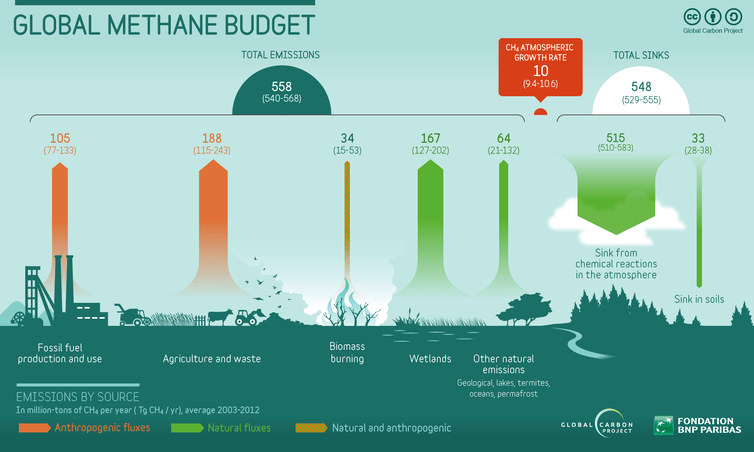
Global methane budget 2003-2012 based on Saunois et al. 2016, Earth System Science Data. See the Global Carbon Atlas at http://www.globalcarbonatlas.org. | Where does all the methane go? Methane is emitted from multiple sources, mostly from land, and accumulates in the atmosphere. In our greenhouse gas budgets, we look at two important numbers. First, we look at emissions (which activities are producing greenhouse gases). Second, we look at where this gas ends up. The important quantity here is the accumulation (concentration) of methane in the atmosphere, which leads to global warming. The accumulation results from the difference between total emissions and the destruction of methane in the atmosphere and uptake by soil bacteria. CO2 emissions take centre stage in most discussions to limit climate change. The focus is well justified, given that CO2 is responsible for more than 80% of global warming due to greenhouse gases. The concentration of CO2 in the atmosphere (now around 400 parts per million) has risen by 44% since the Industrial Revolution (around the year 1750). While CO2 in the atmosphere has increased |